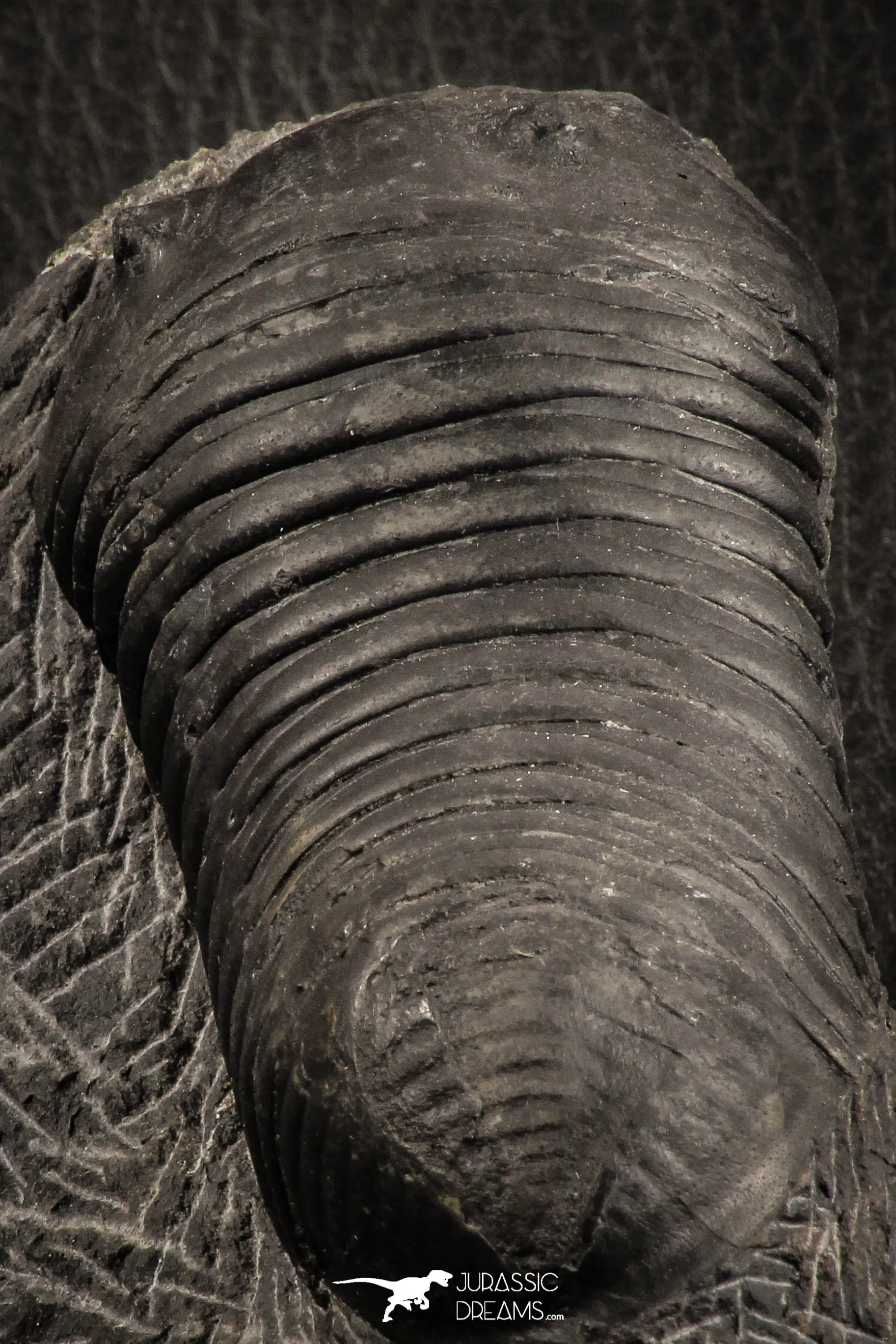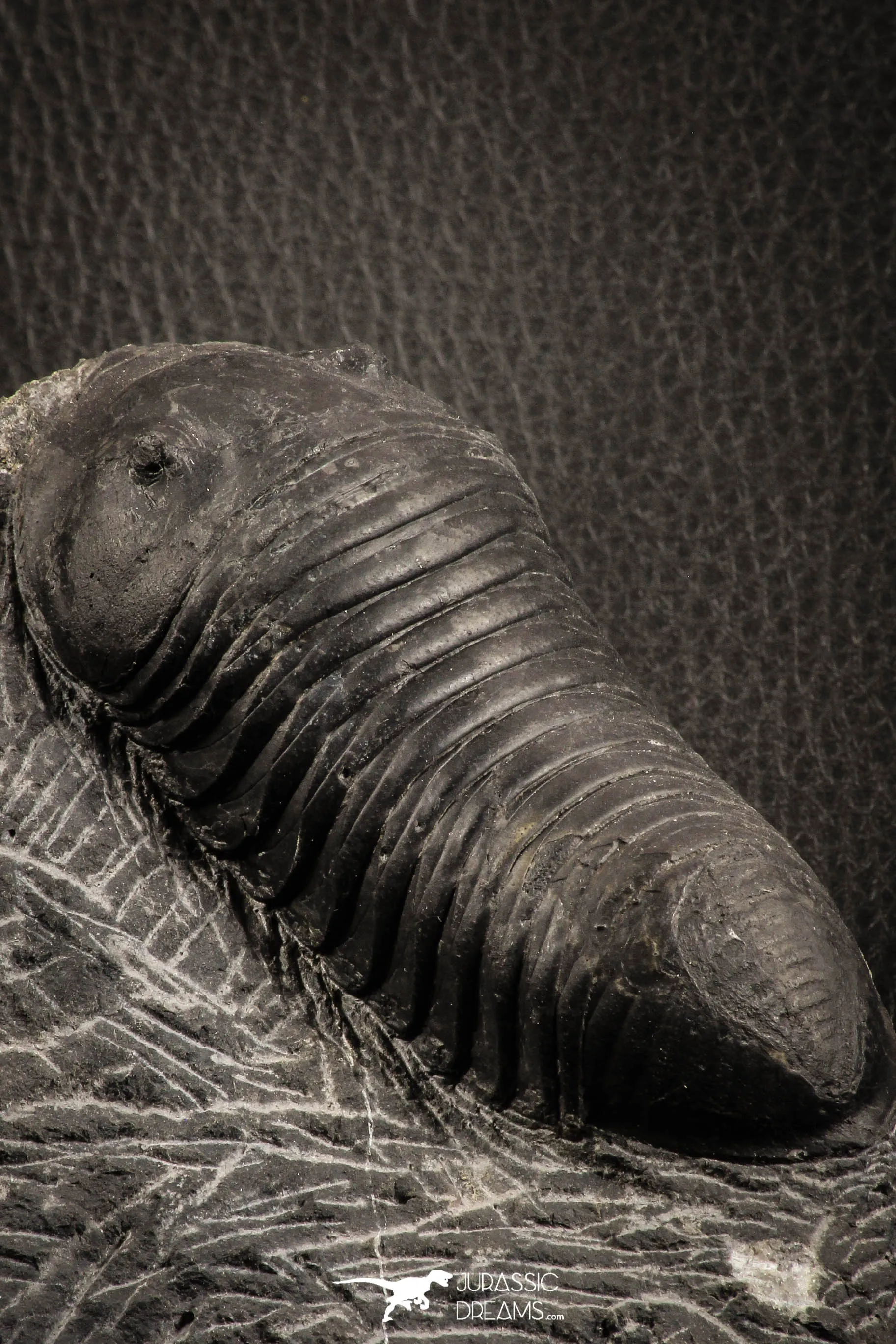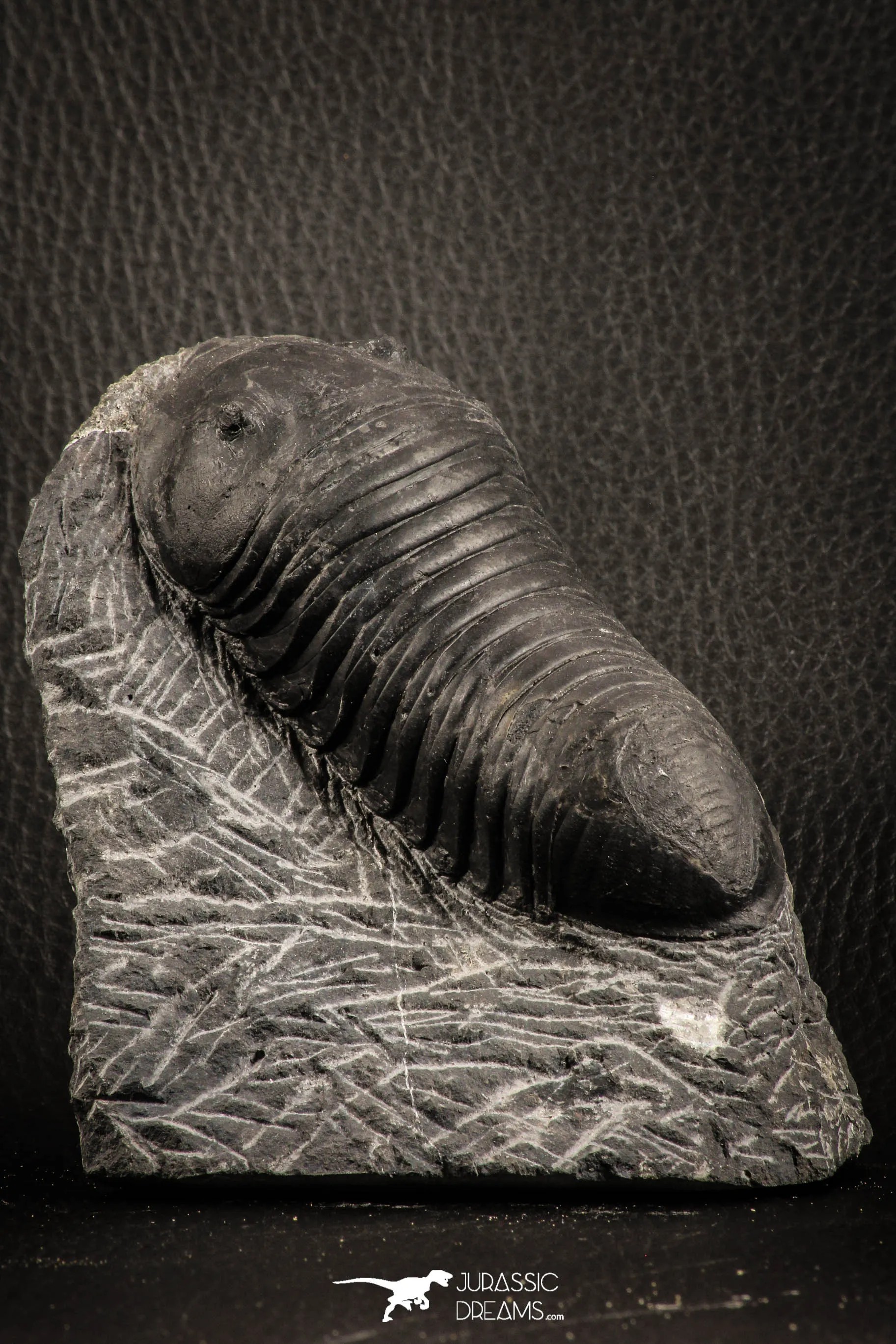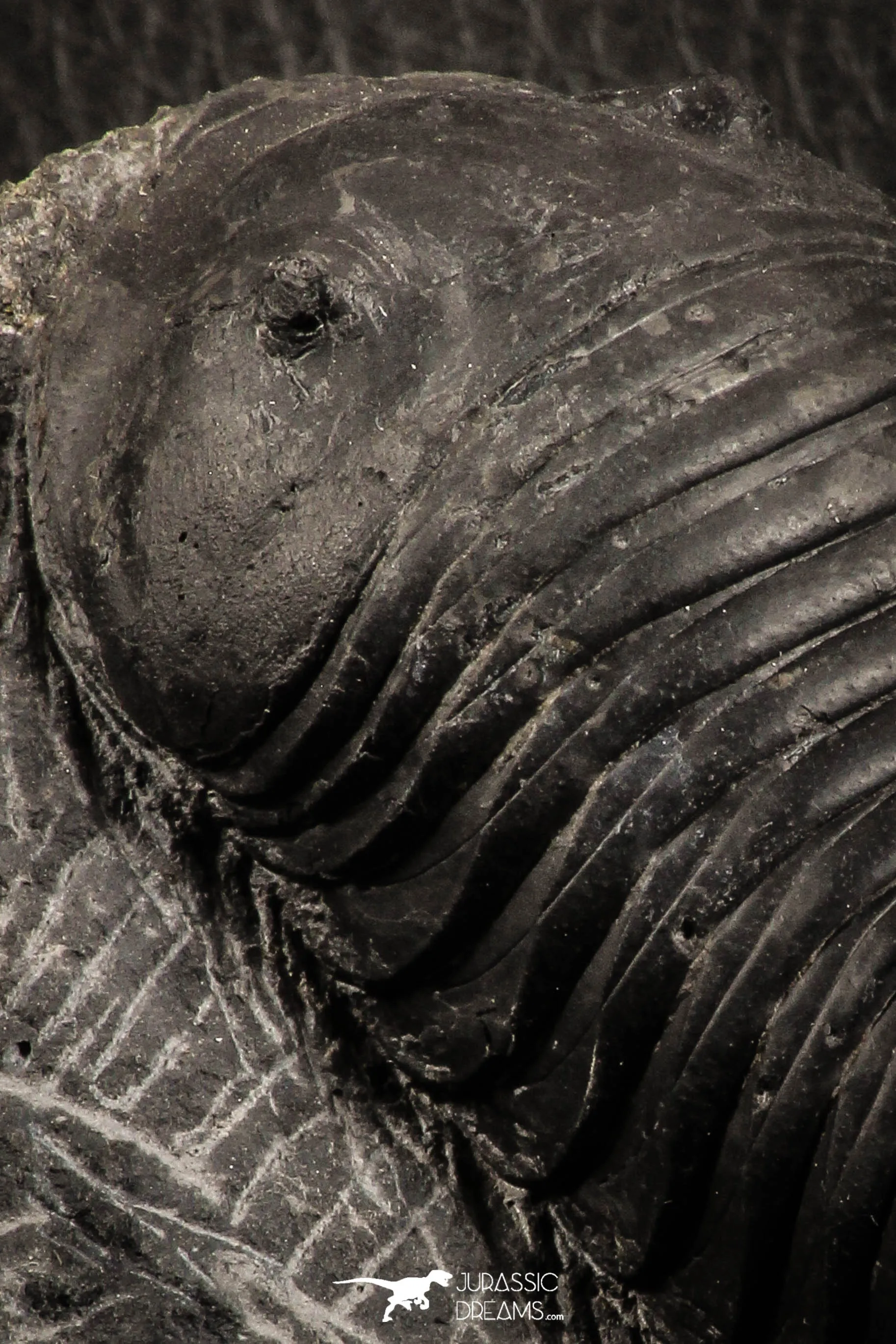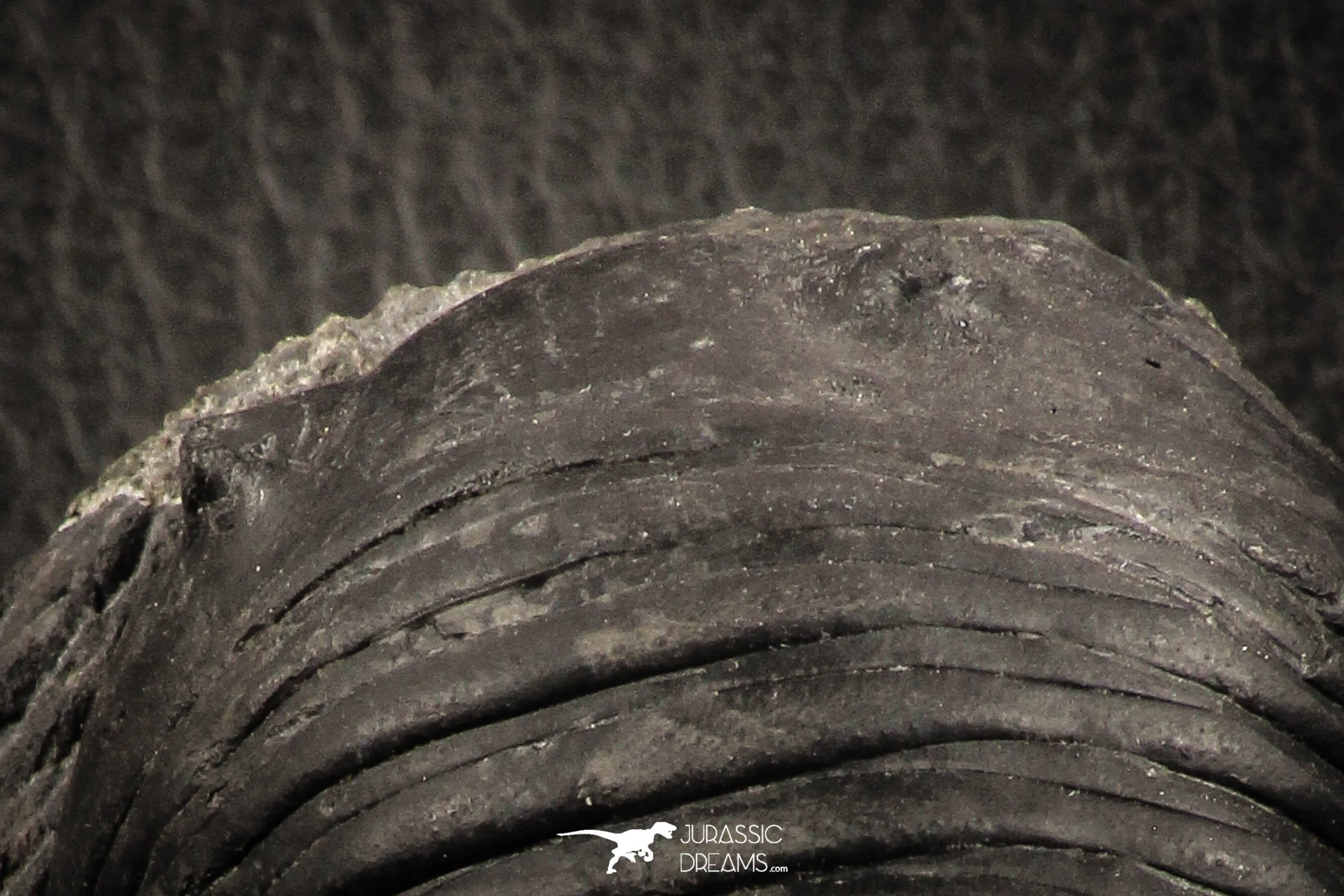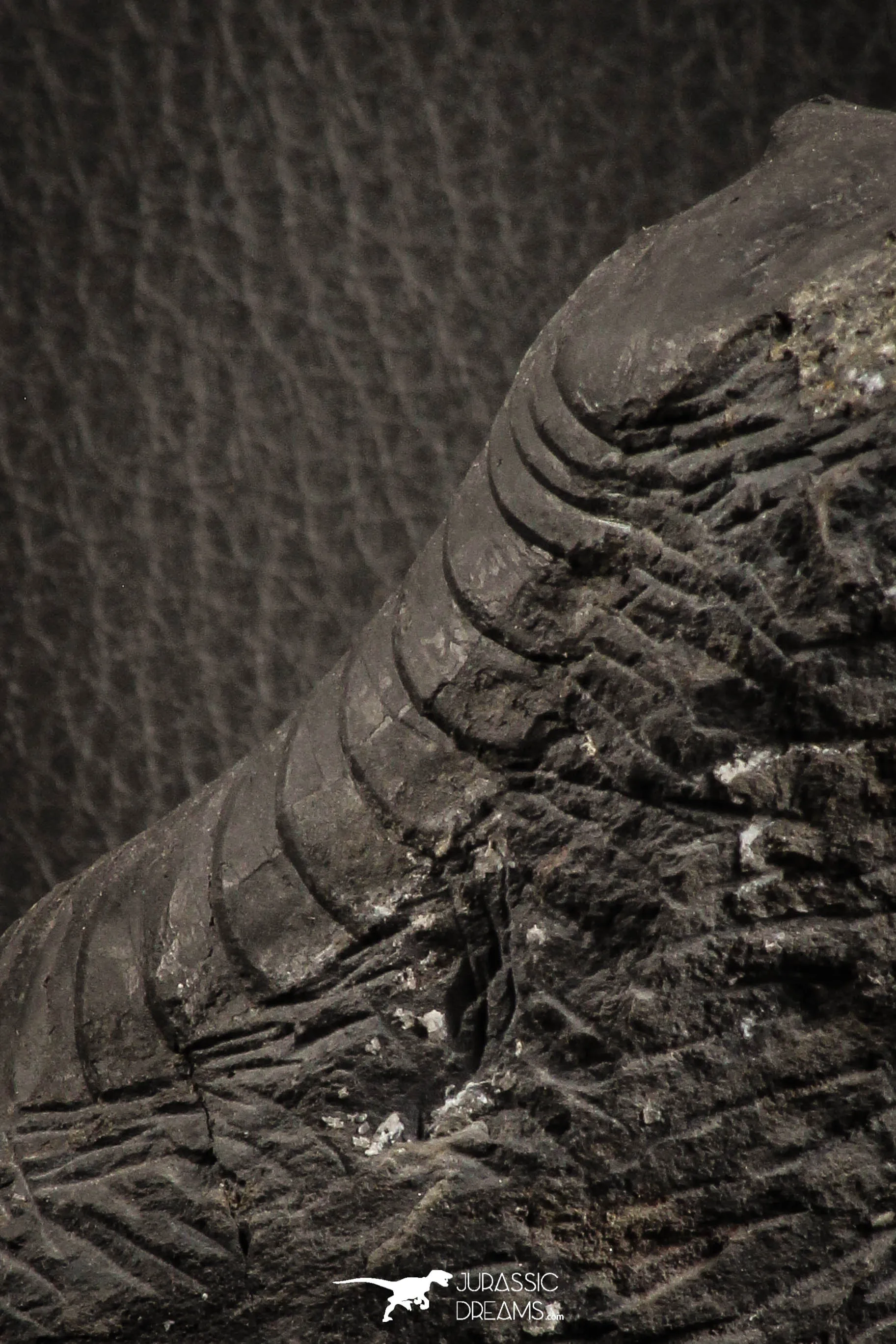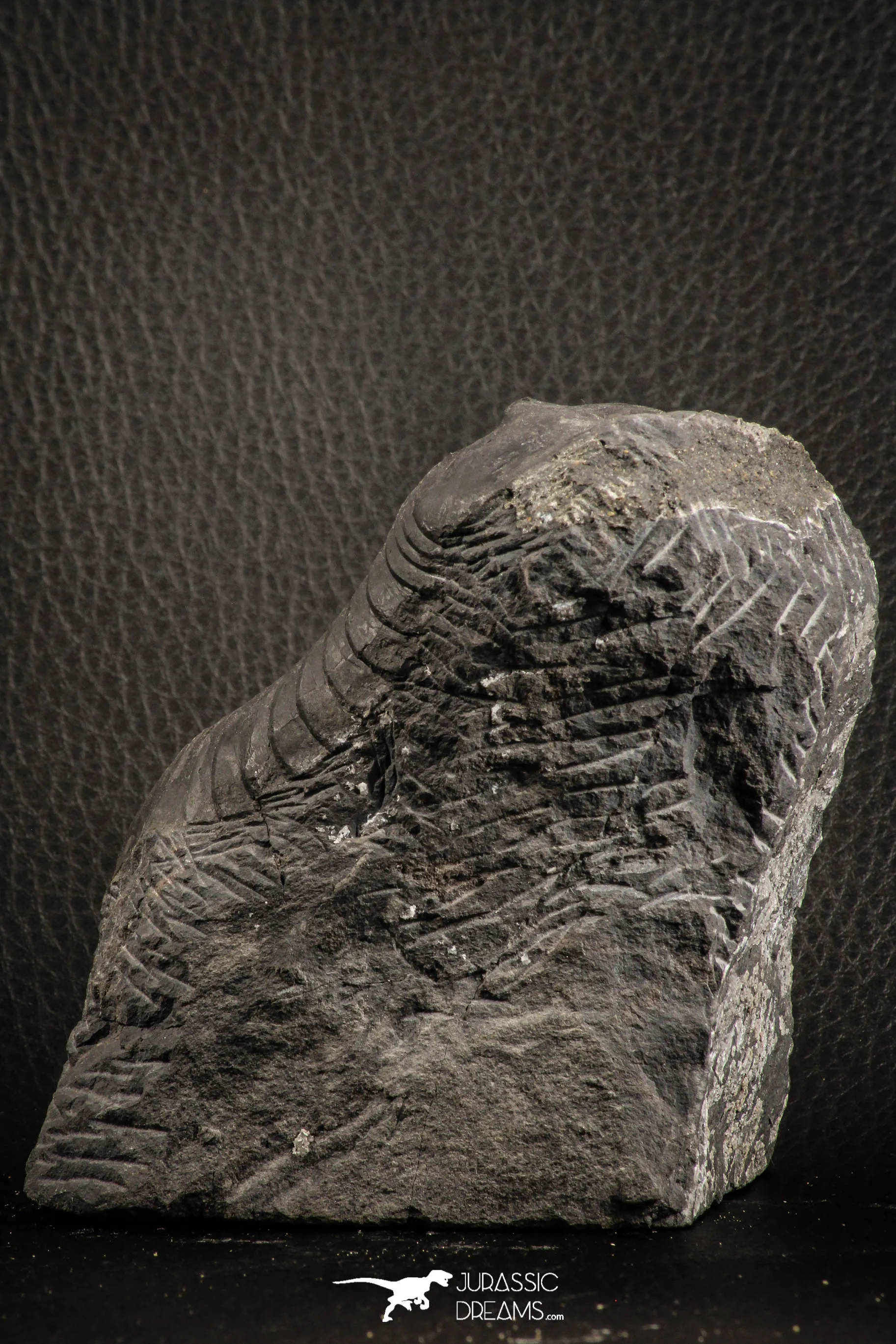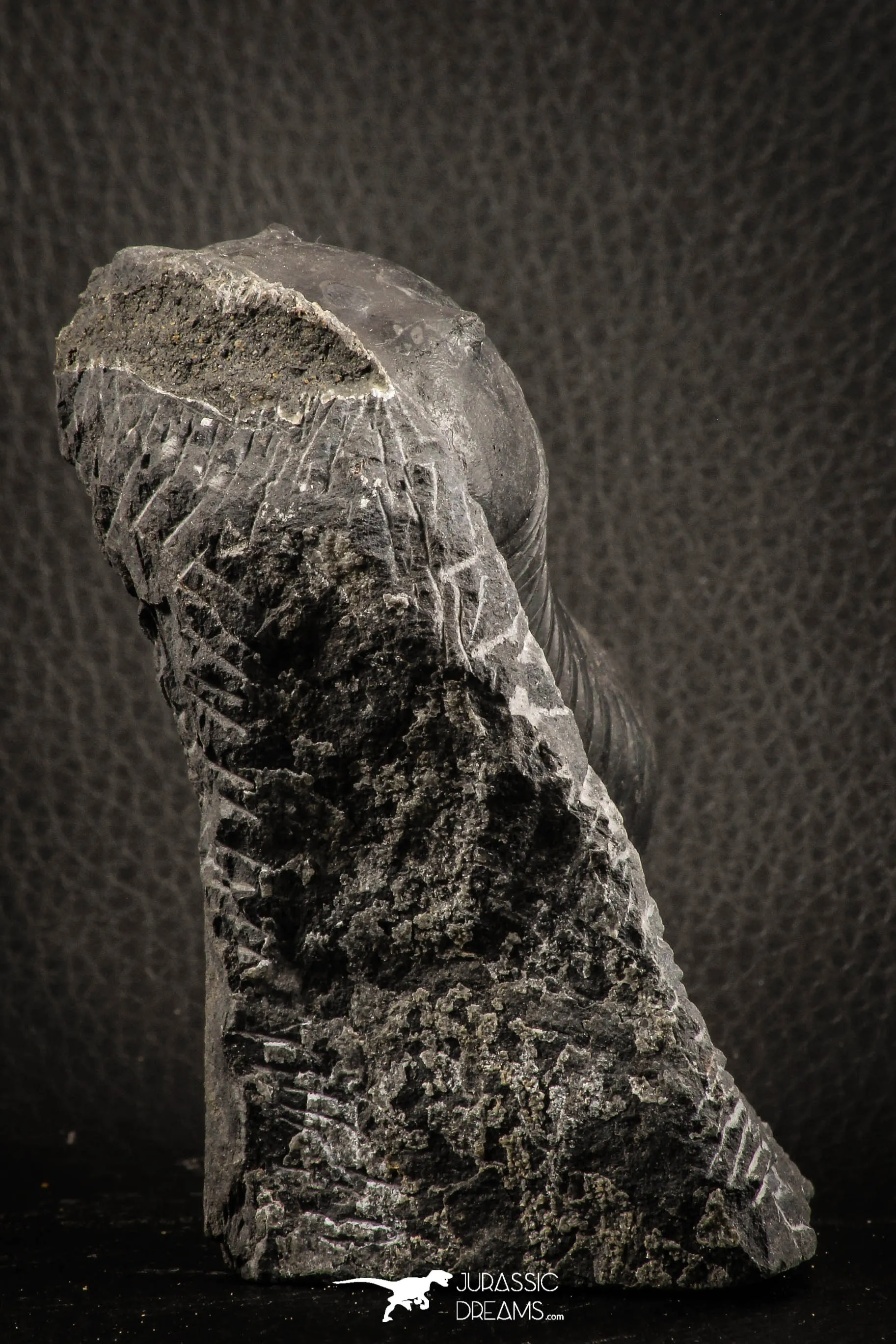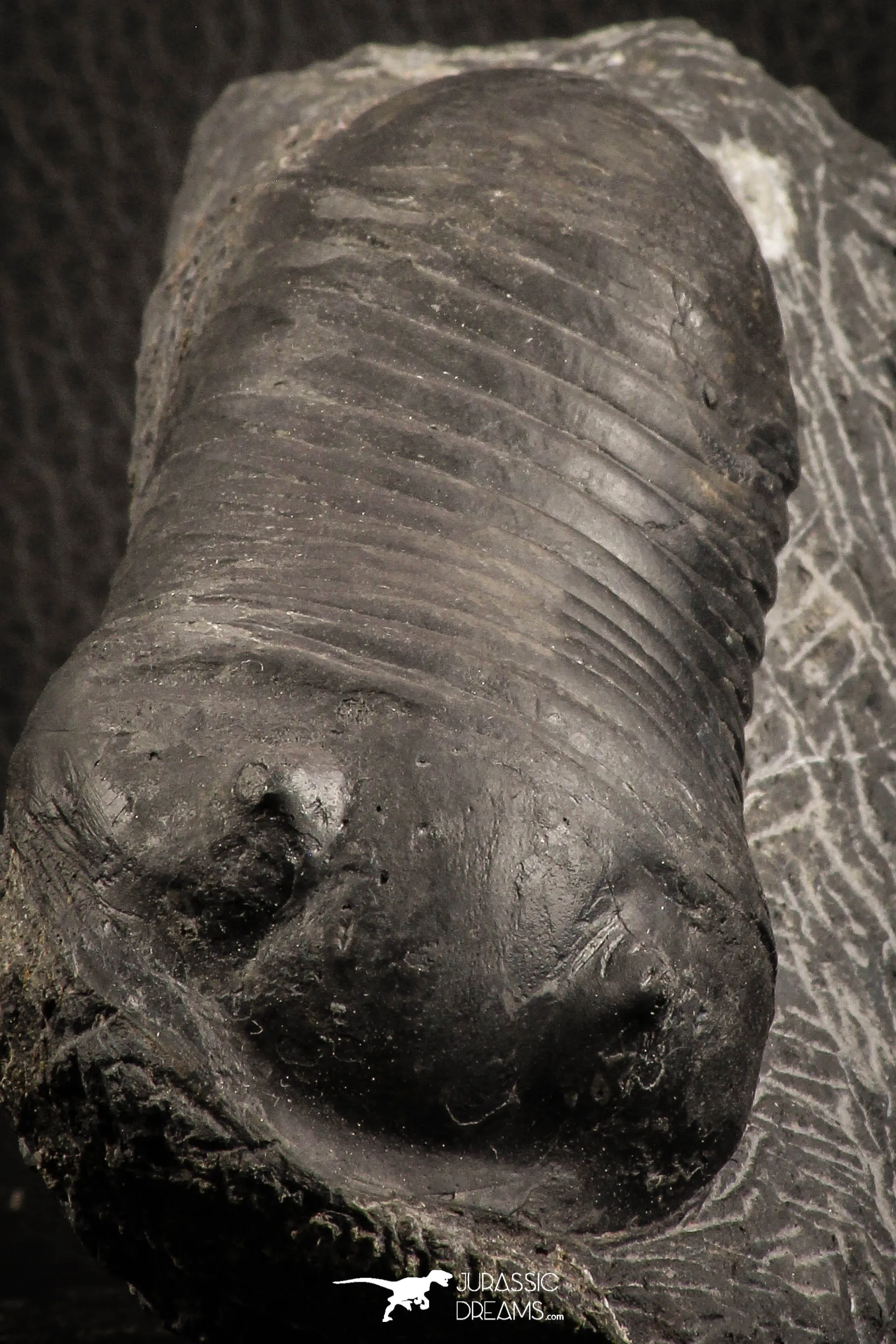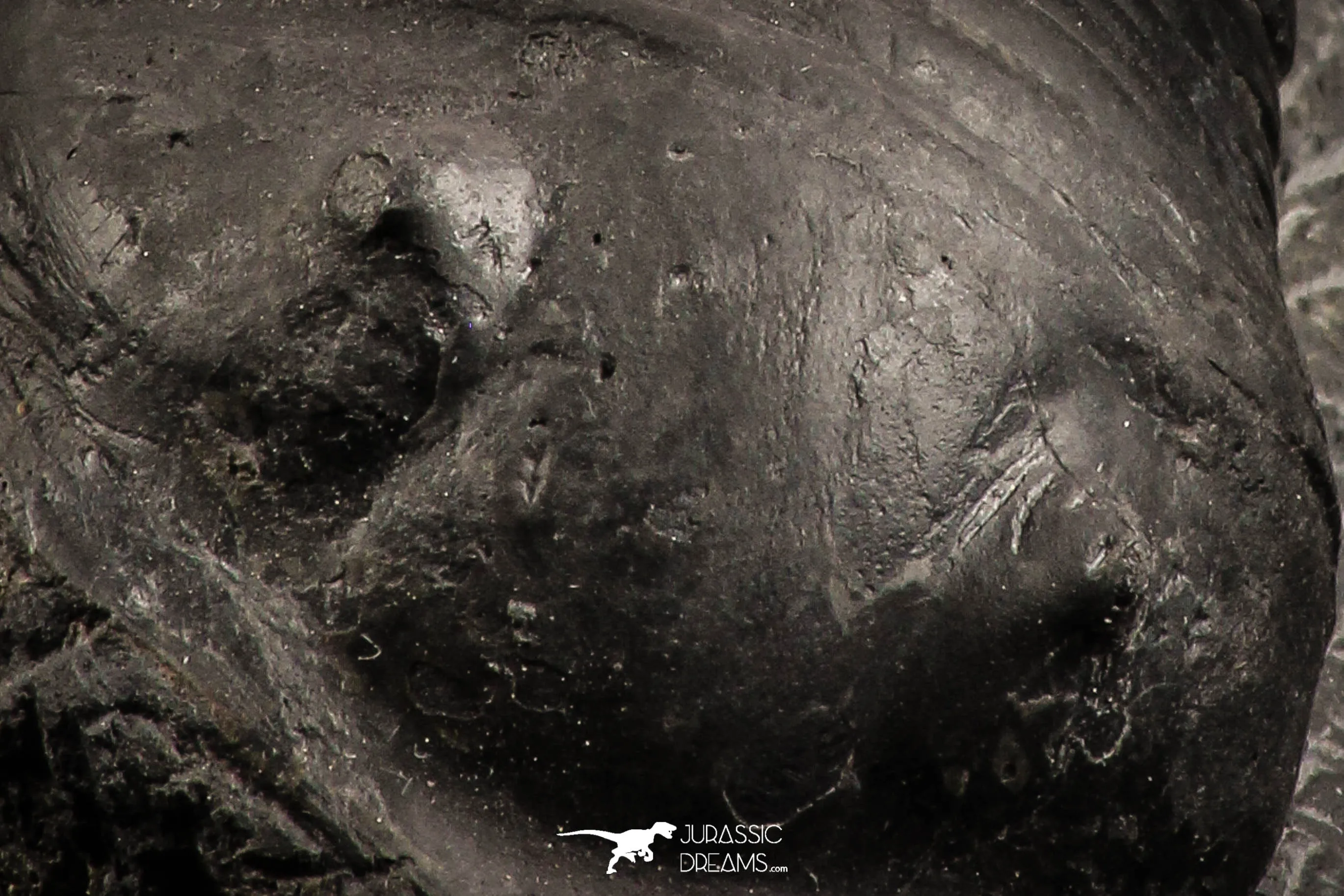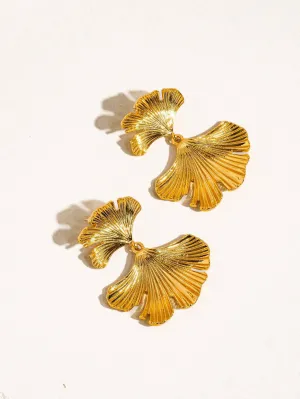Extremely rare species. Its size is enormous compared to the specimens that are usually found in this taxon. It has tiny restorations made on its shell during its meticulous and long preparation.
Homalonotidae is a family of trilobites that lived from the Ordovician to the Devonian. They are characterised by a shovel-like cephalon (head), and are closely related to the family Calymenidae.
†Parahomalonotus sp, Reed 1918 (trilobite)
Trilobita - Phacopida - Homalonotidae
Parent taxon: Homalonotidae according to P. A. Jell and J. M. Adrain 2002
See also Sepkoski 2002
Sister taxa: Arduennella, Burmeisterella, Burmeisteria, Colpocoryphinae, Digonus, Dipleura, Eohomalonotinae, Homalonotinae, Homalonotus, Iberocoryphe, Kerfornella, Kerfornellinae, Leiostegina
Subtaxa: Parahomalonotus calvus
Ecology: fast-moving low-level epifaunal carnivore
Environments: marine, deep subtidal, coastal, offshore, transition zone/lower shoreface
Age range: 412.3 to 402.5 Ma
Distribution:
• Devonian of Algeria, Morocco , France , Germany , Poland , Turkey

